I am assuming that the following are true:
- The graph is acyclic. You mentioned this in your comment, but I'd like to make explicit that this is a starting assumption.
- There is a known set of root nodes. We need to have some way of knowing what nodes are always considered reachable, and I assume that (somehow) this information is known.
- The initial graph does not contain any superfluous nodes. That is, if the initial graph contains any nodes that should be deleted, they've already been deleted. This allows the algorithm to work by maintaining the invariant that every node should be there.
If this is the case, then given an initial setup, the only reason that a node is in the graph would be either
- The node is in the root reachable set of nodes, or
- The node has a parent that is in the root reachable set of nodes.
Consequently, any time you delete a node from the graph, the only nodes that might need to be deleted are that node's descendants. If the node that you remove is in the root set, you may need to prune a lot of the graph, and if the node that you remove is a descendant node with few of its own descendants, then you might need to do very little.
Given this setup, once a node is deleted, you would need to scan all of that node's children to see if any of them have no other parents that would keep them in the graph. Since we assume that the only nodes in the graph are nodes that need to be there, if the child of a deleted node has at least one other parent, then it should still be in the graph. Otherwise, that node needs to be removed. One way to do the deletion step, therefore, would be the following recursive algorithm:
- For each of children of the node to delete:
- If that node has exactly one parent: (it must be the node that we're about to delete)
- Recursively remove that node from the graph.
- Delete the specified node from the graph.
This is probably not a good algorithm to implement directly, though, since the recursion involved might get pretty deep if you have a large graph. Thus you might want to implement it using a worklist algorithm like this one:
- Create a worklist W.
- Add v, the node to delete, to W.
- While W is not empty:
- Remove the first entry from W; call it w.
- For each of w's children:
- If that child has just one parent, add it to W.
- Remove w from the graph.
This ends up being worst-case O(m) time, where m is the number of edges in the graph, since in theory every edge would have to be scanned. However, it could be much faster, assuming that your graph has some redundancies in it.
Hope this helps!
